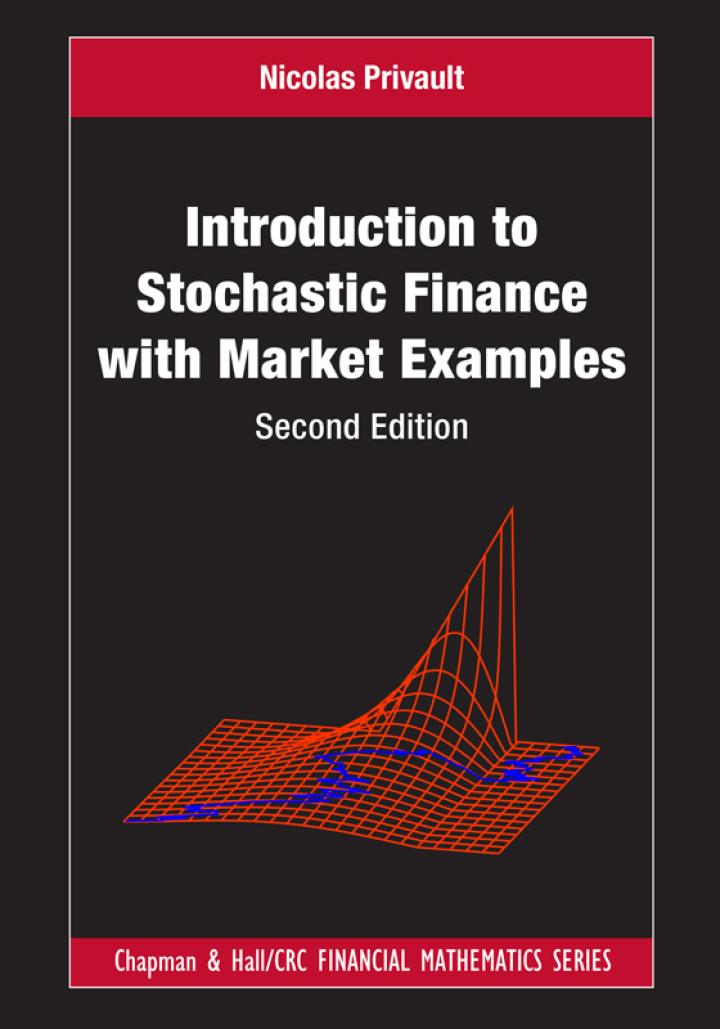(Leung and Sircar (2015)) ProShares Ultra S&BP500 and ProShares UltraShort SESP500 are leveraged investment funds that seek...
Question:
(Leung and Sircar (2015)) ProShares Ultra S\&BP500 and ProShares UltraShort SESP500 are leveraged investment funds that seek daily investment results, before fees and expenses, that correspond to \(\beta\) times \((\beta \mathrm{x})\) the daily performance of the \(\mathrm{S} \& \mathrm{P} 500\), \({ }^{\circledR}\) with respectively \(\beta=2\) for ProShares Ultra and \(\beta=-2\) for ProShares UltraShort. Here, leveraging with a factor \(\beta: 1\) aims at multiplying the potential return of an investment by a factor \(\beta\). The following ten questions are interdependent and should be treated in sequence.
a) Consider a risky asset priced \(S_{0}:=\$ 4\) at time \(t=0\) and taking two possible values \(S_{1}=\$ 5\) and \(S_{1}=\$ 2\) at time \(t=1\). Compute the two possible returns (in \%) achieved when investing \(\$ 4\) in one share of the asset \(S\), and the expected return under the riskneutral probability measure, assuming that the risk-free interest rate is zero.
b) Leveraging. Still based on an initial \(\$ 4\) investment, we decide to leverage by a factor \(\beta=3\) by borrowing another \((\beta-1) \times \$ 4=2 \times \$ 4\) at rate zero to purchase a total of \(\beta=3\) shares of the asset \(S\). Compute the two returns (in \%) possibly achieved in this case, and the expected return under the risk-neutral probability measure, assuming that the risk-free interest rate is zero.
c) Denoting by \(F_{t}\) the ProShares value at time \(t\), how much should the fund invest in the underlying asset priced \(S_{t}\), and how much \(\$\) should it borrow or save on the risk-free market at any time \(t\) in order to leverage with a factor \(\beta: 1\) ?
d) Find the portfolio allocation \(\left(\xi_{t}, \eta_{t}ight)\) for the fund value \[
F_{t}=\xi_{t} S_{t}+\eta_{t} A_{t}, \quad t \geqslant 0 \]
according to Question (c), where \(A_{t}:=A_{0} \mathrm{e}^{r t}\) is the riskless money market account.
e) We choose to model the S\&P500 index \(S_{t}\) as the geometric Brownian motion \[
d S_{t}=r S_{t} d t+\sigma S_{t} d B_{t}, \quad t \geqslant 0 \]
under the risk-neutral probability measure \(\mathbb{P}^{*}\). Find the stochastic differential equation satisfied by \(\left(F_{t}ight)_{t \in \mathbb{R}_{+}}\)under the self-financing condition \(d F_{t}=\xi_{t} d S_{t}+\eta_{t} d A_{t}\).
f) Is the discounted fund value \(\left(e^{-r t} F_{t}ight)_{t \in \mathbb{R}_{+}}\)a martingale under the risk-neutral probability measure \(\mathbb{P}^{*}\) ?
g) Find the relation between the fund value \(F_{t}\) and the index \(S_{t}\) by solving the stochastic differential equation obtained for \(F_{t}\) in Question (e). For simplicity we normalize \(F_{0}:=\) \(S_{0}^{\beta}\).
h) Write the price at time \(t=0\) of the call option with claim payoff \(C=\left(F_{T}-Kight)^{+}\)on the ProShares index using the Black-Scholes formula.
i) Show that when \(\beta>0\), the Delta at time \(t \in[0, T)\) of the call option with claim payoff \(C=\left(F_{T}-Kight)^{+}\)on ProShares Ultra is equal to the Delta of the call option with claim payoff \(C=\left(S_{T}-K_{\beta}(t)ight)^{+}\)on the S\&P500, for a certain strike price \(K_{\beta}(t)\) to be determined explicitly.
j) When \(\beta<0\), find the relation between the Delta at time \(t \in[0, T)\) of the call option with claim payoff \(C=\left(F_{T}-Kight)^{+}\)on ProShares UltraShort and the Delta of the put option with claim payoff \(C=\left(K_{\beta}(t)-S_{T}ight)^{+}\)on the S\&P500.
Step by Step Answer:

Introduction To Stochastic Finance With Market Examples
ISBN: 9781032288277
2nd Edition
Authors: Nicolas Privault





